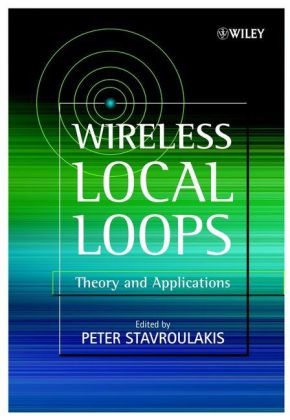Read more
Informationen zum Autor Peter Stavroulakis is the editor of Wireless Local Loops: Theory and Applications, published by Wiley. Klappentext WLL (Wireless Local Loop) ist ein Spezialgebiet der Technologie mobiler und drahtloser Kommunikationssysteme mit eigenen Anforderungen und Grenzen. "Wireless Local Loops" erläutert diesen Bereich umfassend und detailliert. Besprochen werden u.a. Analyse und Design, mögliche Dienste und Management von WLLs. Mit Beiträgen führender Fachleute aus Europa, Japan und den USA! Zusammenfassung This volume provides the necessary special treatment of Wireless Local Loop (WLL) as an area of Mobile and Wireless systems with its own constraints and technical requirements. It also covers all areas of analysis and design, as well as possible services and management of WLLs. Inhaltsverzeichnis List of Contributors xi Preface xv Acknowledgement xvii Part I Theoretical aspects 1 1 Introduction to WLL: Digital Service Technologies 3 1.1 Background 3 1.2 Advantages of Wireless Systems 5 1.3 WLL Service Requirements 6 1.4 Generic WLL System Architecture 9 1.5 WLL System Technologies 14 1.6 Comparison of WLL Services 29 Appendix A Fixed versus Mobile Cellular Systems 30 Appendix B CDMA versus TDMA in WLL 31 References 33 2 Propagation Models for Wireless Local Loops 35 2.1 Introduction 35 2.2 WLL System Configuration 36 2.3 Delay Spread in WLL Environments 37 2.4 Components of Overall Path Loss 39 2.5 Path Loss Models 43 2.6 Comparison of Propagation Models 55 References 55 2 Propagation Models for Wireless Local Loops 35 2.1 Introduction 35 2.2 WLL System Configuration 36 2.3 Delay Spread in WLL Environments 37 2.4 Components of Overall Path Loss 39 2.5 Path Loss Models 43 2.6 Comparison of Propagation Models 55 References 55 3 Wireless Local Loop Networks Capacity Enhancement by Space Division Multiple Access 57 3.1 Introduction 57 3.2 Background 57 3.3 Technologies for the First Generation of Wireless Local Loop 63 3.4 Multiple Access Techniques 70 3.5 Simulation Description 75 3.6 Performance Results 76 References 77 4 Combined Trellis Coded Quantization/Modulation over a Wireless Local Loop Environment 81 4.1 Introduction 81 4.2 Fundamentals of Trellis Coded Modulation 81 4.3 General Aspects of Combined Trellis Coded Quantization Modulation Schemes 83 4.4 Basic Model 88 4.5 An Example: 4-State 8-Psk Combined Trellis Coded Quantization/Modulation 95 References 99 5 Low Sequency W-CDMA Codes Lead to More Economic WLL and Infostation Terminals 101 5.1 Introduction 101 5.2 Code Selection and Generation 104 5.3 Infostation Transmitter 106 5.4 Terminal Receiver 107 5.5 Simplified Signal Processing for a Low Data Terminal 108 5.6 Noise Analysis and Processing Gain 110 References 112 6 Wide-band Wireless Outdoor to Indoor Local Loop Channel Models for Urban and Suburban Environments at 2 GHz 115 6.1 Introduction 115 6.2 Experimental Procedure 116 6.3 Data Processing 120 6.4 Channel Parameters 123 6.5 Channel Model 131 References 139 7 Traffic Considerations in Comparing Access Techniques for WLL 141 7.1 Introduction 141 7.2 Fixed Wireless Access Networks 142 7.3 Multiple Access Technologies 144 7.4 CDMA Capacity Analysis 146 7.5 Comparison of TDMA and CDMA Results 159 List of Abbreviations 161 References 161 8 Traffic Based Dynamic Channel Allocation Schemes for WLL 163 8.1 Introduction 163 8.2 Access on Allocation Techno...

